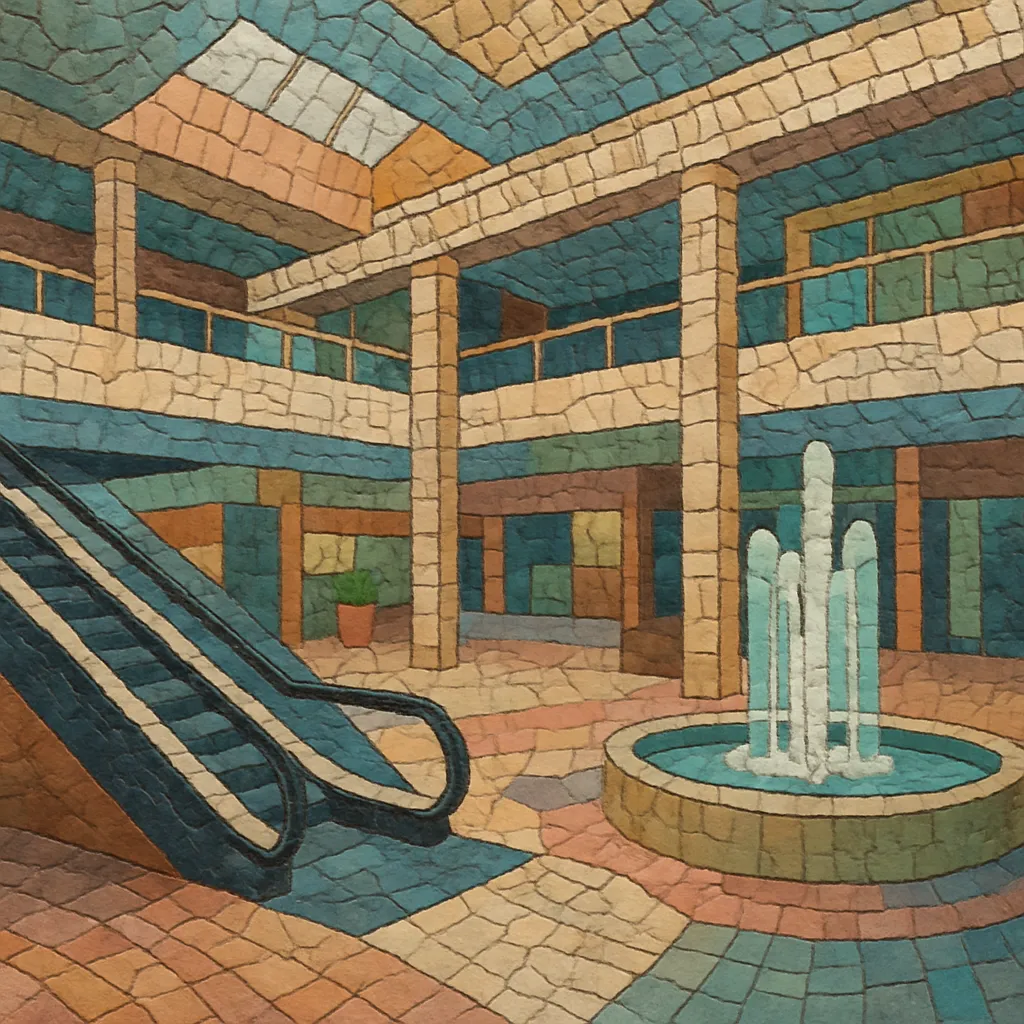
Mallsoft is a subgenre of vaporwave that magnifies the sound and ambience of shopping malls, corporate lobbies, food courts, and retail soundtracks. It often loops, slows, and filters archival easy listening, smooth jazz, or library music to simulate the dreamlike experience of wandering an empty mall.
The style foregrounds spatial illusion and consumer nostalgia: wide reverbs, distant PA announcements, and fountain or escalator noise create a glossy yet uncanny, hyper-commercial environment. Rather than rhythmic drive, mallsoft prioritizes mood, texture, and the sensation of endless browsing in a perpetually pristine retail space.
Mallsoft emerged online in the early 2010s as a focused branch of vaporwave. While vaporwave critiqued and reimagined late‑20th‑century consumer culture at large, mallsoft zoomed into a single setting—the shopping mall—drawing from in-store playlists, corporate background music, and library/smooth jazz cues. Early uploads on Bandcamp, SoundCloud, and YouTube established the genre’s parameters: slowed tempos, luxurious reverbs, and looping fragments that emulate non-stop retail ambience.
A handful of projects defined mallsoft’s sonic and conceptual core. Disconscious’s “Hologram Plaza” (2014) provided a blueprint with gleaming, slowed muzak loops and atrium-like space. Cat System Corp.’s “Palm Mall” (2014) became a touchstone for its vivid, immersive mall atmosphere and field-recording details. Albums by PrismCorp Virtual Enterprises, Luxury Elite, and 식료품groceries explored corporate and food-court aesthetics, pushing the genre toward increasingly site-specific sound design.
Mallsoft emphasizes spatial simulation over song form. Producers employ long loops, minimal harmonic movement, and meticulous filtering to evoke marble-floored corridors, glass ceilings, and diffuse PA systems. The genre often embraces a bright yet eerie nostalgia: childhood memories of malls, the promise of endless consumption, and the uncanny quiet of after-hours retail.
By the late 2010s, mallsoft influenced adjacent microstyles that pursued glossy, idealized corporate spaces (e.g., utopian virtual) and cozy domestic ambience (e.g., comfy synth). While remaining an internet-native form, its techniques—spatialized mixing, archival sampling, and environmental storytelling—continue to inform ambient and sample-based producers across scenes.

